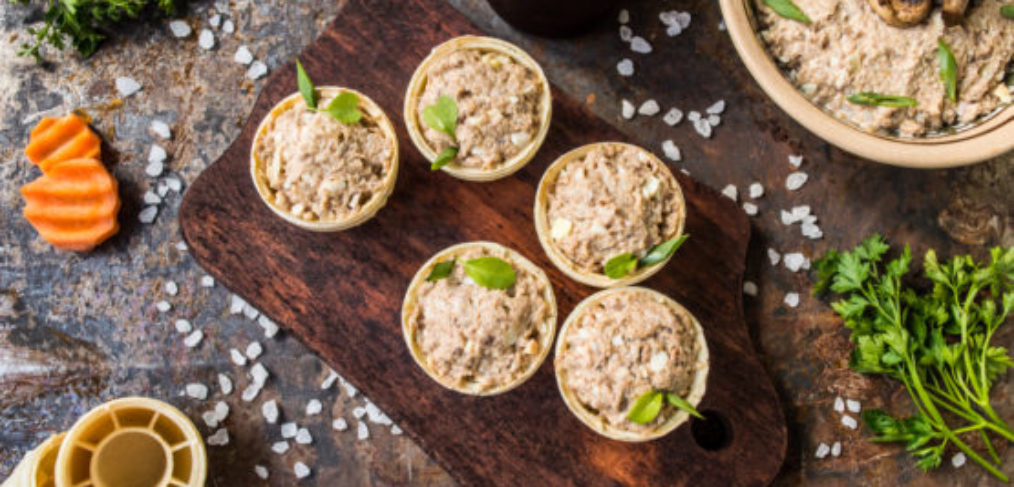Liver Made Tasty

Yes, it is possible to make this one food that many shy away from taste great.
Whether it’s because you’ve only eaten it in the past after it had been prepared in an unattractive manner, or the concept of eating organ meats frightens you, I encourage you to be a bit open minded and consider giving it a another try.
Why?
Because eating guts is good for your guts.
In particular, liver, grass- fed liver is more nutritious than any other food. A 3.5-ounce serving of cooked beef or chicken liver supplies more than your daily requirement of vitamin B12 and large amounts of other B vitamins. It is also rich in protein, zinc, copper, iron, and vitamin C (1).
Another reason to reconsider broadening your palate is the concept of nothing going to waste.
It’s one conversation if one chooses to be vegan and avoid all animal products, but if we choose to eat only certain parts of an animal, what’s the thinking behind that?
And, by the way, if you fall into the category of being comfortable eating chicken breast but not chicken skin, filet mignon but not beef liver or a pasture fed pork chop but not pork offal, consider this: have you ever eaten sausage or bologna? Chances are, in that case, that you have, in fact already eaten and quite likely enjoyed your guts!
So now, the tricky question: how can we disguise that signature taste and texture of liver, the one that seems to be unpopular at best and hated at worst?
We focus on ways to add flair, flavor.. and a bit of fun!
Below are my top five tips to make liver more palatable… perhaps even so much that your kids will give it a try!
(1) Stick with grass fed. Pasture-raised / grass fed animal products are much higher in nutrients than animal products that come from commercial feedlots (2). Conventionally sourced liver can contain antibiotics, hormones and even have a tougher taste due to scar tissue (3) resulting from a lifetime of eating inflammatory foods.
(2) Hit it with Acid. Liver is high in glutathione and other thiols, which are easily oxidized during extended storage and heating. Oxidation of thiols may contribute to the off-taste often experienced when eating liver. Acidic environments protect thiols from oxidation by keeping them protonated. Minimizing unfrozen storage and heat during cooking also protect thiols from oxidation (4). Try Meyer Lemon or Key Lime for variety.
(3) Use your favorite flavors. Adding fresh herbs and spices to whatever preparation you’re testing out is easy, as is taking an aromatic (combinations of vegetables, herbs and sometimes even meats, heated in a safe cooking fat, such as mindfully sourced lard, tallow or duck fat, or coconut oil) approach.
(4) Don’t overcook it. Safe to say about any recipe, isn’t it? With grass fed meat and organs in particular, due to their inherent leanness when compared with conventionally raised animals who’ve been intentionally fattened up with grain, cook time decreases. Keep an eye on what you’re doing and err on the side of under cooking instead. Livers should be cooked to an internal temperature of at least 165 °F, so remove them from what you’re cooking before they reach 155, allowing time to rest, tented.
(5) Find recipes. These days, paleo friendly, keto approved and gluten free recipes are at your finger tips, and all for free! So much easier than it was back when those of us in the early Paleosphere were writing blog posts about how to Paleo-ize recipes and menu items! Even if you come across one which does contain any untoward ingredients, you can easily modify it to be prepared without whichever food items you prefer to avoid. Check out my recipe for liver pate (shown above) which, by the way, is easily eaten without a cracker. Try it by the spoonful… or on a slice of jicama if you want that crisp!
Still skeptical? Think back to when you first learned about Paleo or Keto or that eating fat is actually good for you, and how that may have led you closer to your goal of optimal health.
One that proverbial Pandora’s Box is open, it’s easy to think way outside said container!
(1) “How Nutritious Is Liver?” Berkeley Wellness
(2) EatWild.com
(3) “Frontline: Modern Meat. Interview with Michael Pollan.” PBS
(3) Masterjohn, Chris. “How to Cook Liver and Make It Taste Not-Bad”





